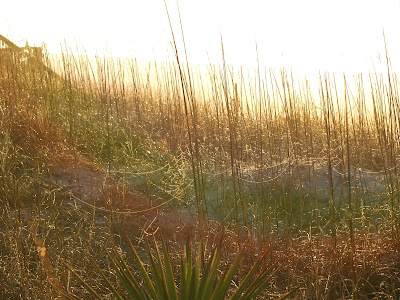http://www.nytimes.com/2010/04/30/arts/design/30alive.html?src=twt&twt=nytimesarts
Dead or Alive, at the Museum of Arts and Design, includes Kate MccGwire’s “Discharge,” made of feathers.
Fun With Feathers and Bones
By KAREN ROSENBERG
Published: April 29, 2010
Instead of insects under glass, you’ll see Fabian Peña’s collages of cockroach-wing fragments. And in lieu of taxidermied birds, there’s Susie MacMurray’s cave of rooster feathers. As for botanical specimens, Xu Bing’s landscape “drawing” — actually an arrangement of dried leaves and flowers behind a translucent screen — is a more than passable substitute.Combine some of the materials in “Dead or Alive” at the Museum of Arts and Design, and you’d have a potent witch’s brew. A single piece by Tessa Farmer, for instance, makes use of a ram skull, a mummified frog and bat, bladderwort, hedgehog spikes, weasel skulls, a spider web and sections of a wasp’s nest. (Another sinister-sounding substance, volcanic ash, delayed the piece’s installation; it will be up by Tuesday.)
Among the other materials on view are mouse skeletons, silkworm cocoons, kelp, emu feathers and fast-food chicken bones. This being the Museum of Arts and Design, however, few works have the visceral, stomach-turning presence of, say, the cow bones scrubbed clean by Marina Abramovic or Damien Hirst’s vitrines of rotting animals.
There is a work by Mr. Hirst in the show, one of his butterfly paintings: a gorgeous but tame arrangement of blue wings, evoking stained glass. Most of the artists in “Dead or Alive” use organic matter in safe and conventional ways.
One convention that’s normally tiresome is the obsessive gathering and reworking of small objects into a large, often abstract form. Yet in “Dead or Alive” this practice results in some stunning design objects. An overhead light fixture by Ango Design clusters some 12,000 silkworm cocoons on a wire matrix; the silk filaments diffuse the light beautifully. Just as delicate and labor-intensive are the dandelion puffs glued, seed by seed, to LED lights (by the team of Lonneke Gordijn and Ralph Nauta).
The same detail-oriented approach works well in a section of wearable art, by Nick Cave, Sanford Biggers and Maria Fernanda Cardoso. Mr. Cave’s “Soundsuits,” hooded garments designed to make a ruckus as the user moves, are well known; the example here is covered with twigs and looks something like a woolly mammoth coat. But the standout is Ms. Cardoso, a Colombian-born artist who works in Australia and makes delicate capes out of emu feathers on fiberglass netting.
Other works succeed because the artists don’t let the original source of the materials dictate the art’s form. Claire Morgan arranges bluebottle flies in the form of a grid, rather than a swarm, by stringing them on lengths of transparent thread. And Kate MccGwire shapes pigeon feathers into a giant arc that creates the illusion of spouting water.
A division between hunters and gatherers starts to emerge, one that’s further detailed in a catalog essay by the museum’s chief curator, David Revere McFadden. Some of the gatherers actually use edible materials: the shellacked anchovies in Tracy Heneberger’s “Moon”; the herbs and spices in Helen Altman’s fragrant “Spice Skulls.”
Lucia Madriz’s “Gold Fever,” a bit of agitprop made of rice, beans and corn kernels, bears the message “Modified Seed/Contaminated Food.” Meanwhile Tanja Smeets’s ceiling installation of red lentils suspended in knotted pantyhose doesn’t seem to have much to say about consumption; it does suggest that Ms. Smeets has been looking, maybe too closely, at the work of Ernesto Neto.
Notable hunters include Tim Hawkinson, who fashions a prehistoric tool or weapon by joining concave pieces of eggshell, and Christy Rupp, who assembles skeletons of extinct birds from enough fast-food chicken bones to have fed a football team.
It’s harder to envision Shen Shaomin’s “Sagittarius,” which combines human and animal bones, in a natural history museum. Likewise Billie Grace Lynn’s “Mad Cow Motorcycle,” a bovine skeleton attached to a motorized bicycle frame. (It comes with a helmet designed to look like upside-down udders.) In an accompanying video the artist rides the bike around the streets of Miami, stopping to talk to naturally inquisitive passers-by.
Organized by a team of museum staff members — Mr. McFadden, the curator Lowery Sims and the assistant curator Elizabeth Edwards Kirrane — “Dead or Alive” has more depth than some of the museum’s previous group shows. The artists come from all over the world, and only a handful are big names on the level of Mr. Hirst or Mr. Hawkinson.
And while the art is made of things that are no longer living, the show is certainly lively. Almost everything in it will arouse some kind of curiosity, whether material, scientific or historic. The 16th-century wunderkammer, it seems, is an excellent model for a 21st-century art and design museum.
















